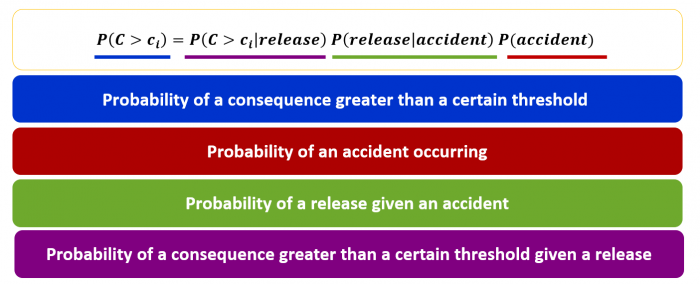Sandia’s approach and methodology to Space Nuclear Launch Safety is centered around the modeling of detailed simulations, combined with Monte Carlo sequence codes, to create a probabilistic risk analysis. This methodology combination aids in the identification and mitigation of the main sources of risk to create a basis for a successful mission launch.
Launch Safety Analysis Approach
Launch safety analysis approach seeks to identify main sources of launch risks and possible associated mitigating actions. By applying quantitative estimates of risks that are defensible and credible, the overall mission risk should be reduced. Researchers at Sandia use many approaches to analyze risk, including:
- Mean probability of an accident
- Mean probability of release of radioactive material
- Mass of material released (“source term”)
- Health effects (doses, latent cancer fatalities)
- Land, crop contamination
- All expressed as mean values, percentile values, and exceedance probability graphs
- Quantify uncertainty
Risk Estimation Methodology
Risk estimation methodology combines detailed simulations and Monte Carlo sequence codes to develop probabilistic risk analysis including potential accidents associated with the launch, a detailed understanding of the response of system to insults, and analysis of atmospheric transport and consequences.
Characterization of Risk
The characterization of risk is derived from research methods applied to generate specific probabilities of interest to define the risk picture for decision makers.

Mission Phases
Sandia defines risks based on launch sequencing and phases. The current phased analysis is based on phases 0 through 5 below:
- Phase 0 – Prelaunch, T < t1, from installation of the system to just prior to start of engines at t1
- Phase 1 – Early Launch, t1 ≤ T < tx, start of engines to no potential for land impact in the launch area, tx
- Phase 2 – Late Launch, tx ≤ T, end of Phase 1 to the launch vehicle reaching 30,480 m (100,000 ft), above which reentry heating could occur
- Phase 3 – Suborbital Reentry, end of Phase 2 to just prior to orbit
- Phase 4 – Orbital Reentry, end of Phase 3 to spacecraft separation
- Phase 5 – Long-Term Reentry, end of Phase 4 to no chance of Earth reentry